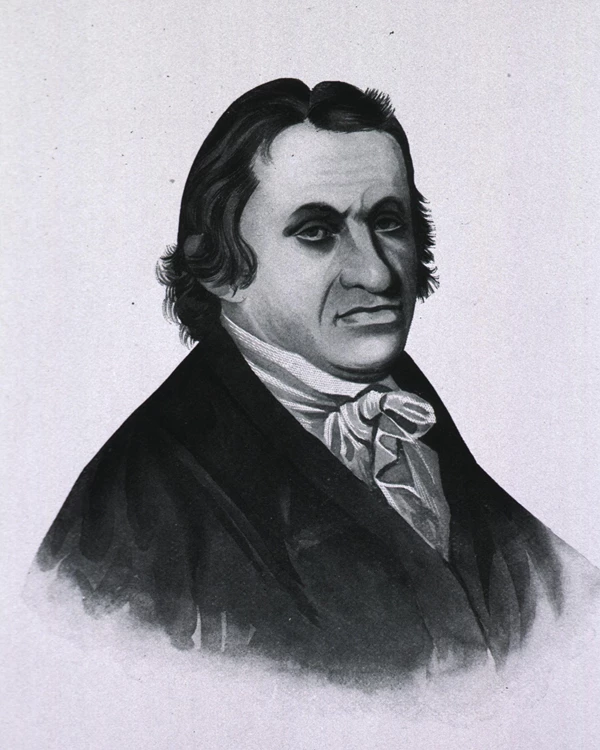Last updated: September 18, 2020
Person
Samuel Bard

Courtesy National Library of Medicine
Samuel Bard was a prominent medical practitioner, professor, and a founder of the College of Physicians and Surgeons in New York City. He was a significant figure in the American Enlightenment and a botanist.
Bard was a driving force behind the creation of the New York hospital in 1770 (and then again later, in 1791), as well as the College of Physicians and Surgeons, which had long been his ambition. As a teacher at Columbia, he was known for his teaching style, which coupled lectures with bedside demonstrations. He wrote on medical subjects such as diphtheria, yellow fever, and obstetrics, as well as medical ethics—he authored the nation’s first textbook on the subject—and was what might be described as an early public health advocate.
Samuel Bard settled at Hyde Park in the spring of 1798, just one year before his father John Bard’s death. He maintained the working farm developed by his father while also carrying out many of the ideas for an ornamental pleasure ground in the natural style. Taking full advantage of the property’s dramatic topography, Bard erected a house south of the farm complex on a natural terrace—a broad ridge at the summit of a steep, wooded slope rising 300 feet above the river. Although the house itself was relatively modest, the view from its west front encompassed a stunning 180-degree panorama of the Catskill Mountains to the north and the Hudson Highlands to the south. In February 1799, anxious “to have the ground about his house in order,” Bard turned his attention to the surrounding landscape, requesting honeysuckle and the latest catalog from the Prince Nursery in Flushing, presumably in connection with the garden he was laying out near the house. On the west front he created an extensive lawn overlooking the Hudson River that became one of Hyde Park’s distinguishing features. He reportedly solicited the assistance of the Philadelphia agriculturist Richard Peters in procuring enough grass seed to sow two acres, so that he might “bring the ground round about his house into a greensward.”
Bard also planted specimen trees, among them a Gingko that has survived into the twenty-first century as one of the oldest examples in North America. He treated the extensive ridge on either side of his house as a park, retaining many of the native trees and culling others to create scenic overlooks. While staying at Hyde Park in 1832, the artist Thomas Kelah Wharton described the effect: “The front lawn occupies the whole level plateau on the top of the ridge, and splendid old trees are left standing at intervals with seats scattered here and there from which you can survey at leisure and in the shade, the exquisite beauty of the river scenery below.” The “celebrated belt of forest trees that extends along the whole [ridge] line,” appears clearly in a map of 1847. Crum Elbow Creek ran through the property and Bard seems to have diverted the water in places to create fish ponds, which he intended to stock with carp and tench imported specially from England. He also erected a greenhouse, where he further developed his expertise in botany by experimenting with the cultivation of “beautiful and rare plants,” many of them obtained through botanical exchange with correspondents in Europe. Bard’s greenhouse, according to his son-in-law, John McVickar, was “the first, in that northern climate, which substituted, with success, the heat of fermentation for the more expensive and dangerous one of combustion.”
Sources
John McVickar, A Domestic Narrative of the Life of Samuel Bard, M.D., LL. D. (New York: A. Paul, 1822)
John Brett Langstaff, Doctor Bard of Hyde Park: The Famous Physician of Revolutionary Times, the Man Who Saved Washington’s Life (New York: E. P. Dutton & Co., Inc., 1942)
Patricia M. O’Donnell, Charles A. Birnbaum, and Cynthia Zaitzevsky, Cultural Landscape Report for Vanderbilt Mansion National Historic Site, Volume I: Site History, Existing Conditions, and Analysis (Boston: U.S. Department of the Interior. National Park Service, 1992)
